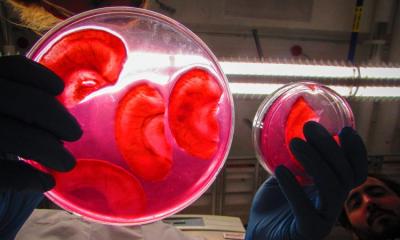

by Alexa Erickson, Collective Evolution
According to the Organ Procurement and Transplantation Network, every ten minutes, someone is added to the national transplant waiting list. OPTN also reports that 22 people die each day waiting for a transplant.
With the supply of organs available for transplantation already far smaller than the demand, the need for technologies to step in is imperative.
Scientists have now made a major step forward in the goal of growing replacement organs, having identified a protein called Meox1 found in stem cells. The protein drives muscle growth.
The team of researchers, from Monash University in Australia, found the link studying zebrafish. Zebrafish are native to Southeast Asia, and are important and widely used vertebrate as a model organism in scientific research.
Like humans, zebrafish have two eyes, a mouth, brain, muscles, blood, bones, teeth, as well as a kidney and heart, among other of the same organs. Zebrafish also contain 70 percent human genes. Such closeness is incredibly hopeful given the results of the study.
“Prior to our work in this field, we didn’t even know that these growth-specific stem cells existed or how they were used,” says lead researcher Peter Currie. “Just knowing that they exist leads us to the possibility of orchestrating them, controlling them, or reactivating them to regrow damaged tissue.”
With the knowledge that organs are desperately needed for transplants, scientists have been studying organ growth in lab conditions for quite some time. However, because there is no knowledge of how stem cells produce so much living tissue in the body, it has made growing our own replacement organs impossible.
The study could provide answers, having found evidence of clonal drift in zebrafish, in which stem cells weren’t splitting apart and growing at random, but rather producing a small number of cloned stem cells to help muscles grow. Only a few stem cells are actually being used to grow most of the required organ tissue, and Meox1 is helping to pick those cells.
The step forward is certainly the better understanding of how our molecular properties work to generate additional tissue inside the body, but there’s still quite a ways to go in terms of producing hearts and livers in the lab when needed.
Organ growth has proven an incredibly complex topic for scientists, and how the process is regulated by stem cells is “one of last frontiers of developmental biology” the researchers say.
Finally understanding how to grow replacement organs would surely be a health revolution, saving the lives of thousands of people every year.


Comments
This is a Great Article
It provides much to consider, so many possibilities on the horizon.